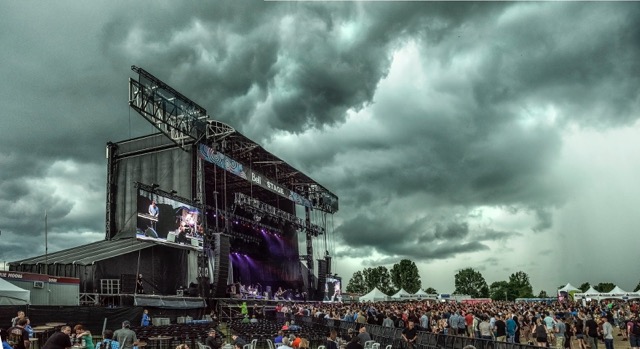Weather Plans, Providers, and the Vital Need for Both
by Dax Cochran, on Feb 29, 2016 11:25:02 AM
As festival season cranks up, so does severe weather season. Festival and event managers are busy finalizing details for the event, securing vendors, and wrapping up all loose ends. With safety a growing priority for all outdoor events, weather planning should be one of the top items on your checklist. It may not be your next event, but eventually weather will put you in the hot seat. It is important to plan ahead so you don’t find yourself making reactionary decisions. So where do you start when it comes to installing a good plan and access to reliable weather information to ensure a high degree of safety for your crews, talent, vendors, and your audience?
As we all know, weather can impact an event in many ways so you must plan for every contingency. Many resources exist to provide historical weather data for your event site and for the time period you will be there. This can help you determine what conditions are possible at your event and and what preparation needs to be made. It is also good to engage professional resources or review industry-provided guidelines to adapt those to your needs. Remember, every event is different and should require a customized weather plan. Examples of resources you should engage include Festival and Event Production as well as the Event Safety Alliance. In addition to required written plans, be sure to outline actions in a chart so that various departments can be easily educated on what is expected of them when weather occurs.
To borrow a line from a previous article I wrote last year, “Do all that we can within reason, not just what we might should.” This statement is important to consider when weather planning for an event.
Installing a plan with the input of as many stakeholders as possible, such as the venue, local emergency management, your staging provider, etc. is paramount. Next, you should install a private weather support service. This provider will supply you with the technology required to set up, organize, and disseminate weather products like forecasts and alerts. It is vital to ensure that your provider backs the technology with 24/7 access to speak with a meteorologist.
Let’s discuss the importance of all of this and how it is required as part of your plan.

Your weather vendor should be providing high precision lightning data. In addition, they should accommodate customized alerting range rings from your event site for this data. As a standard starting place, 20 miles is recommended as an outer cautionary radius with 8 miles as the inner warning radius. These can be adjusted for any plan, if determined appropriate due to unique circumstances. What actions do your plans call for at 20 miles or 8 miles? If you will be sending an audience to shelter, how long will it take to get them there? This is where your weather provider can help determine necessary adjustments on a particular day due to forecasted conditions.
Forecasters can determine the direction and speed any storms would be moving, even before the storm forms. If storms would be moving in at 50 miles per hour vs. 25 miles per hour, this may require an adjustment on your range rings and alerts to ensure the time required to evacuate is accounted for. With customizable forecast thresholds and alert settings, we at WeatherOps are constantly pushing the envelope and raising the bar by recognizing these concerns and providing the industry with solutions.
The above lightning example can also be used to consider other weather threats such as winds, precipitation, extreme temperatures, etc. A temporary stage will have wind ratings and specifications, but will this stage have a video wall and hanging audio? Are these installations likely to be more sensitive to wind than the stage itself? Working with the staging provider and your weather provider, you can customize wind thresholds and designate a clear action plan to be prepared.
When your event commences, having plans and weather support should keep you fully aware of what to expect. The idea is not to alert you when something happens, but to inform you of forecasted conditions well before you receive an actual alert. A good service will provide you with daily forecasts each morning. You should be able to quickly determine if weather will be a threat and if so, I recommend that my customers immediately establish communication with our forecast desk.
If you see high winds are forecast for later in the afternoon or evening when your event is in full swing, it's best to make a plan with your forecaster that morning. You can direct them on how you want updates communicated throughout the day. Be proactive, not reactive. With this approach, you should never be surprised to get an alert. Instead, you will be well aware of the potential due to receiving updates before anything happens. The goal here is to extend your lead time so you can make decisions and implement your plan.
Hopefully, you now see the importance of first having a plan, but then leveraging a weather vendor with live forecaster support and the technology required to back it up. Weather is predictable, but it takes a good plan and reliable partners to ensure a safe experience for anyone at your event.








